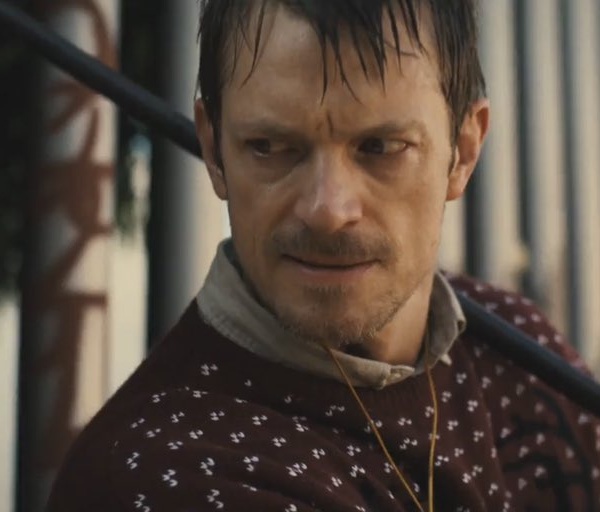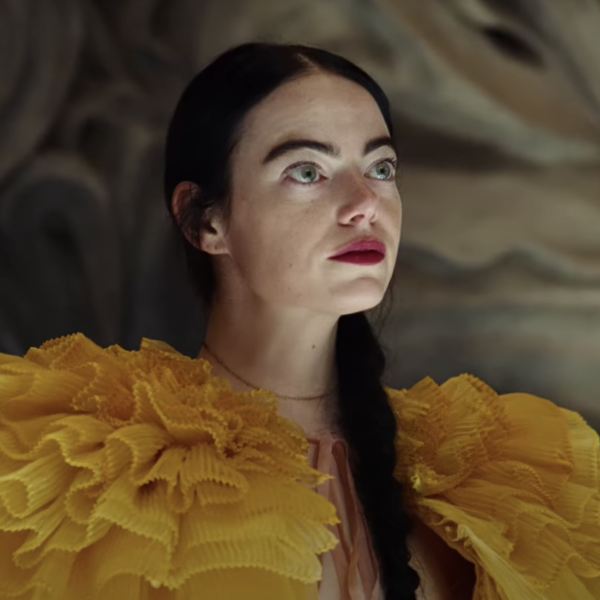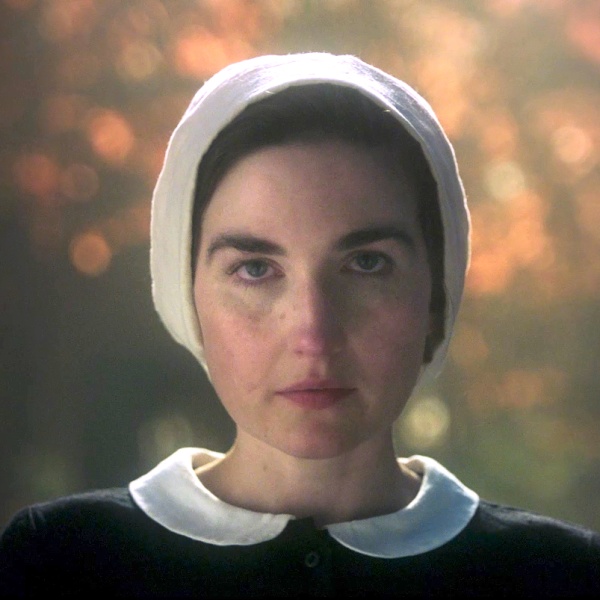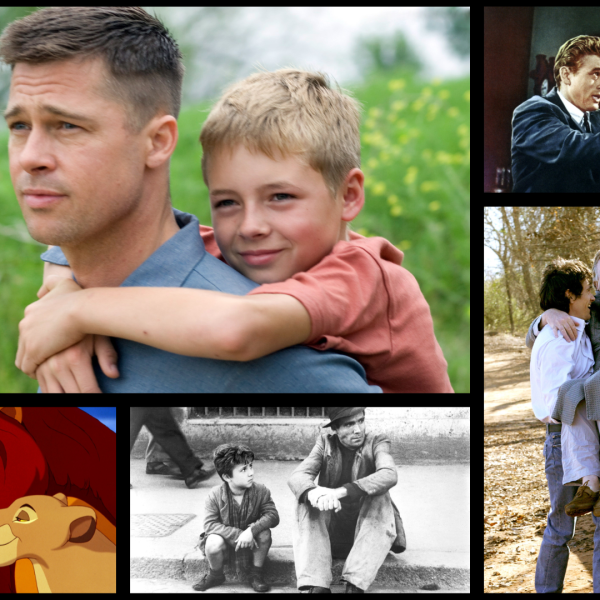Thanksgiving might be over, but the scrumptious scent of Eli Roth’s “Thanksgiving” still lingers over the holiday horror season.
The director’s murderous pilgrim slasher — set in Plymouth, Massachusetts the year after a violent Black Friday trampling leaves three dead on the floor of a department store and puts a masked killer on the path to revenge — invaded our real-world theaters on November 17. It’s doing well with critics and audiences alike, who have been gorging on its themed gore and delighting in its snappy satire and inventive use of corncob holders as a victorious reunion for the “Cabin Fever” director and the horror genre.
Slasher fans have quickly accepted the rampage of the mysterious “John Carver” as a success by all important metrics (it’s doing well at the box office and on Rotten Tomatoes), but the villain’s Thanksgiving-timed arrival in theaters has been a longtime coming for Roth. The feature-length horror flick is the culmination of more than 30 years of nightmarish daydreaming between the director and screenwriter Jeff Rendell, who conceived the idea together as teenagers. It was first realized as a fake trailer in Robert Rodriguez and Quentin Tarantino’s “Grindhouse” in 2007, but would stall at various stages of development over the decade-plus to come.
The meal of a movie was worth the wait. “Thanksgiving” is Roth’s eighth feature film, and his first true horror outing since “Knock Knock” with Keanu Reeves in 2015. The filmmaker released two projects in 2018: the Bruce Willis-starring action revenge movie, “Death Wish,” and the Jack Black and Cate Blanchett-starring fantasy film, “The House with a Clock in Its Walls.” Before that, Roth broke into Hollywood closing out TIFF’s midnight programming with “Cabin Fever” in 2002. He’d follow the successful horror debut up with a streak of genre films, including “Hostel” (2005), “Hostel: Part II” (2007), and “The Green Inferno” (2013).
Looking back on Roth’s career, IndieWire has ranked every feature narrative film Roth has directed. He’s written and produced others, including 2012’s “Aftershock” and 2016’s “Cabin Fever” reboot, as well as acted — see “Inglourious Basterds.” Roth’s shark documentary “Fin” from 2021 has been excluded.
-
8. “The House with a Clock in Its Walls” (2018)

Image Credit: ©Universal/courtesy Everett / Everett Collection Written for the screen by the visionary Eric Kripke (“The Boys,” “Supernatural’), “The House with a Clock in Its Walls” feels exceptionally hard to judge against the rest of Roth’s filmography. It’s a PG-rated fantasy comedy starring Jack Black, Cate Blanchett, and kid actor Owen Vaccaro in an adaptation of author John Bellairs’ 1973 novel of the same name. The kids’ outing isn’t “bad”.per se, but it feels comparable to nothing else on this list and makes little sense to recommend to the types of folks who would be interested in marathoning the rest of Roth’s movies. (That said, I won’t rule out the possibility that “The Hostelwith a Clock In Its Walls” could prove a deeply hilarious double feature.)
When an orphaned kid goes to live with his warlock uncle and his witchy best friend, an investigation into a mysterious ticking sound coming deep from within their house motivates a spooky, coming-of-age journey caught somewhere between “Halloweentown” and an advertorial for the Magic-8 Ball. A winsome cast chemistry and perfectly acceptable CGI effects create a semi-magical world worth checking out if the purple-hued, “Haunted Mansion” subgenre is really your thing. As for Roth, he’s steady and nimble here, delivering a good portfolio piece if nothing else.
-
7. “Death Wish” (2018)

Image Credit: Courtesy MGM The closest Roth has come to directing an outright superhero movie, this “Death Wish” reboot sees Bruce Willis in a classic Bruce Willis role, as made famous by Charles Bronson in the 1974 original and its sequels. Bringer of vigilante justice Paul Kersey, nicknamed the Grim Reaper by Chicago locals, sets out to avenge the death of his wife (Elisabeth Shue) from a brutal home invasion that also left his daughter (Camila Marrone) in a coma.
The trauma surgeon’s arrival as a gunslinging interrogator supposedly worthy of his own action feature makes limited narrative sense, but Willis chews up the pulpy action sequences and noir-ish dialogue with the admirable tenacity he brought to dozens of films throughout his career. For his part, Roth brings a welcome too muchness to the thriller’s more violent sequences to make what could be a forgettable flick a reasonably meaty affair. The troubled project, which experienced multiple rewrites and at one time had Sylvester Stallone attached to star, isn’t revelatory but definitely has its moments; “No, Jack is!” anyone?
-
6. “Knock Knock” (2015)

Image Credit: Courtesy Lionsgate Ana de Armas and Lorenza Izzo have the time of their lives opposite Keanu Reeves in “Knock Knock”: a naughty, psychosexual thriller about a seemingly devoted husband and father lead astray by two strangers’ arrival at his door one dark and stormy night. Roth’s ode to suburban destruction is most memorable for its outrageously funny “torture” scene involving Keanu, some headphones, and a monologue about flight attendants and free pizza. But there are plenty of juicy attractions to be had on the way to that campy climax and the film’s brutally callous conclusion.
A noxious blend of earnest seduction, manipulative teasing, and intentional cruelty gets wrung out of this relatively straightforward consideration of stranger danger that’s part “Promising Young Woman,” part “Funny Games” — and technically a remake of Peter S. Traynor’s “Death Game” from 1977. Reeves leaves it all on the field as a willfully thick victim of his own behavior, but Izzo (“The Green Inferno” star was married to Roth from 2014 to 2019) is particularly magnetic as a calculating executioner working in tandem with de Armas’ deceptively infantile right-hand woman. It’s shaggy suspense, but great fun if you can get in its groove — a slippery tunnel of a script from Roth, “Aftershock” writer/director Nicolás López, and “The Green Inferno” co-writer Guillermo Amoedo.
-
5. “Cabin Fever” (2002)

Image Credit: ©Lions Gate/Courtesy Everett Collection Roth’s first feature film, “Cabin Fever” recently reemerged in the public consciousness thanks to the pandemic. The isolation terror starring Rider Strong closed TIFF in 2002 and marked the filmmaker as a genre writer/director to watch. The itchy disaster flick chronicles the doomed road trip of five college friends who are staying at a remote cabin in the woods when a skin-eating disease makes the leap from animal to human and local enforcement reveals itself to know more than first thought about the epidemic.
Roth cameos as a drug-peddaling drifter opposite a dog named Dr. Mambo in what’s ultimately a stellar ensemble effort. Jordan Ladd and Cerina Vincent offer a fascinating final girl pairing as a self-righteous group sacrifice and nihilistic late-stage survivor, while Joey Kern and James DeBello help Strong keep the action urgent and electric as twenty-somethings way in over their fever-ridden heads. It’s not a universally appealing film; that’s in part because it includes a dude fingering a girl’s rotting leg, but mostly because it has a divisive comedic ending that includes a white actor saying the “n-word.” Still, it’s a notable outing from Roth that’s still scary more than two decades later. Ti West would direct the film’s sequel, “Cabin Fever 2: Spring Fever,” in 2009.
-
4. “The Green Inferno” (2013)

Image Credit: Everett Collection / Everett Collection “Hostel: Part II” takes the cake for Roth’s most sadistic horror film because of some particularly vicious torture scenes. But “The Green Inferno” is far and away his grossest movie, and it’s plenty mean to its victims — paying tribute to “Cannibal Holocaust” in a nauseuating, controversial abduction story that makes sympathetic villains out of a fictitious cannibal tribe living in the Amazon.
Izzo stars again, this time in her first project for Roth as Justine: an American undergrad who blindly follows campus activists to a dangerous deforestation demonstration across the world. After narrowly escaping a violent encounter with corporate militia in deep-jungle Peru, the group is nevertheless rocketed into hell by a fallen plane. The crash is quickly swarmed by unfriendly locals and the clueless Justine, reckless Alejandro (Ariel Levy), good-hearted Lars (“Spy Kids” Daryl Sabara), academic Jonah (Aaron Burns), and socially-minded couple Amy (Kirby Bliss Blanton) and Samantha (Magda Apanowicz) are collected for consumption. Not for mid-century horror fans with weak stomachs, “The Green Inferno” is a gnarly nightmare and underrated Roth triumph.
-
3. “Hostel: Part II” (2007)

Image Credit: ©Lions Gate/Courtesy Everett Collection In the grand tradition of surprisingly spectacular horror sequels, “Hostel: Part II” takes what was disturbing from the first film and stretches those elements to their bloodiest possible extremes for a second nightmare that’s just as satisfying — if not a smidge grotesque. Written and directed again by Roth, this polarizing 2007 gorefest inverts the structure of the original, telling the story from the perspective of the antagonists more than the victims in a setup that’s almost identical to the first film but with female tourists instead of male ones as its victims.
Lauren German is a calm and collected American college girl, lead unknowingly into a battle against the deceptively awful Stuart (Roger Bart) in an underground pay-to-torture human trafficking scheme in Slovakia. She’s joined by classmate Lorna (Heather Matarazzo) and best friend Whitney (Bijou Phillips), who falls victim to Stuart’s traveling buddy, Todd (Richard Burgi). Some have championed “Hostel: Part II” as a feminist satire, but, even sans that interpretation, it’s an unforgettable exploration in too-muchess that will dare you to keep up with its limit-testing taste.
-
2. “Thanksgiving” (2023)

Image Credit: ©TriStar Pictures/Courtesy Everett Collection Roth serves up the funniest film of his career with “Thanksgiving”: a feature-length expansion on a fake trailer he directed for Robert Rodriguez and Quentin Tarantino’s “Grindhouse” in 2007 that’s as smart as it is splatterific. Nell Verlaque and Patrick Dempsey appear as a final girl and the head of law enforcement respectively, who find themselves hunted by a murderous pilgrim with a sick sense of seasonal humor a year after a local catastrophe sets the mysterious masked killer on a path to revenge.
The smart, anti-capitalist slasher satire kicks off with a brutal Black Friday massacre and builds to the most revolting culinary moment in cinema since “The Green Inferno” tattoo reveal. Perfectly on theme and outrageously satisfying with its violence and gore, the rampage of John Carver is a holiday miracle for horror comedy fans of all kinds that’s laugh-out-loud funny when you want it to be, and deadly serious when you’re ready for some terror served at just the right temperature. It’s maybe a seasonal classic in the making, and a new annual tradition at the very least.
-
1. “Hostel” (2005)

Image Credit: ©Screen Gems/Courtesy Everett Collection Most Roth experts would agree “Hostel” is his best film. The writer/director’s depraved horror vision from 2005 has a reputation for being extreme to great effect, revving its engines with an achilles tendon slice you’ll feel in your toes and building to a torture chamber reveal that’s impossible to spoil since you’ll sense it inching closer with every agonizing beat.
Jay Hernandez makes for a fantastic final guy as backpacker Paxton: an arrogant American college student who is lured to a hostel in Slovakia with his friend Josh (Derek Richardson), where the two are sold into a torture-centric human trafficking ring through which clients pay to murder travelers however they see fit. Jan Vlasák is menacing as an unnamed Dutch torturer and the gateway narrative antagonist into the series’ sadistic Elite Hunting Club. But Rick Hoffman, who would re-team with Roth for “Thanksgiving,” is just as memorable as an American businessman who would create the obvious template for Bart and Burgi’s characters in the sequel.
“Hostel” is consistently in the running for the scariest film many genre fans have witnessed; it’s precisely executed and ruthlessly terrifying with a concept that was reportedly approved by Tarantino himself. (You’ll spot the “Pulp Fiction” director in an uncredited role as a German man, yelling from a window in one of the late-night street scenes.)




